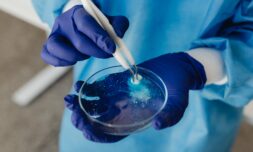Looking at the facts
On November 16th of last year, the US Food and Drug Administration (FDA) cleared lab-grown poultry for human consumption on the basis that it is biologically identical to normal meat when cultivated from the cells of living, healthy chickens.
Companies producing lab-grown meat place the cells in a large stainless-steel tank, similar to those using beer-brewing equipment. The cells are then given the nutrients they need to survive and multiply, undergoing the exact biological process that happens inside a living animal.
This environment provides the building blocks of muscle and fat: water, proteins, carbohydrates, fats, vitamins, and minerals, which allow the cells to grow into chunks of meat similar to those we’re used to seeing in the supermarket.
Those who view lab-grown meat as part of a sustainable future point not only to its lower carbon footprint, but also to its potential to be safer than consuming animal products sourced from industrial farms and even traditional smaller-scale farms.
They say this because animal cells used to create lab-grown meat are thoroughly screened for infectious pathogens including viruses, bacteria, and other harmful microbes before being deemed a fit for cultivation.
As a result, the process does not require the use of any antibiotics or antifungal agents. This will help prevent antibiotic resistance in humans from worsening, a phenomenon caused by high quantities of antibiotics fed to livestock raised by the traditional agricultural industry to prevent diseases or infections.
Supporters add that lab-grown meat is far less likely to cause foodborne illnesses. Traditional farming environments, especially where animals are cramped together, can be breeding grounds for bacteria like E. coli and Salmonella, which make us humans sick.
One final benefit is the ability to optimise the nutritional value of lab-grown meat. Unlike traditional meat, where nutritional values are fixed based on the animal’s diet and livelihoods, lab-grown meat can have its nutrient profiles enhanced or modified.
The case for lab-grown meat looks pretty good, then. It reduces pressure on the agricultural industry and its environmental impact, while delivering a virtually identical product that is safer and healthier.
Picking apart unsubstantiated claims
In recent months, a vendetta has been launched against lab-grown meat, especially in the US.
One campaign group is generating advertisements that fuel fears people already have when trying out emerging food types. These ads have been deployed on conservative and right-leaning news channels and websites, targeting audiences that are already suspicious of novel technology, climate science, and social change as a whole.
The advertisements make several statements about cultivated meat that have been disproven.
These include non-factual claims that lab-grown meat contains an innumerable (yet unnamed) amount of chemicals, that consuming it will cause cancer in humans, and even go as far as comparing the cells used to grow cultivated meat with tumour cells.
All of this is fearmongering at best.
Those involved in the business of cultivated meat have willingly discussed the possible shortcomings of lab-grown meat – with very few of them overlapping with the concerns outlined in this new campaign.
Scientists’ biggest worries relate to the potential to spark new food allergies in humans, as well as how it may react differently with the human gut microbial system. They even contemplate whether there will be any long-term health effects of eating lab-grown meat as a staple food.
Those working to cultivate lab-grown meat are carefully considering these possibilities and are looking to understand how they can prevent these outcomes. They are also discussing these processes publicly.
They do not want to – and cannot, really – launch their products without approval from governing bodies and food safety officials.
When will lab-grown meat become available?
For those living in the UK, the opportunity to try meat grown in a lab may be coming sooner than we realise.
The popular retailer Fortnum and Mason has been working closely with Ivy Farms, an Oxfordshire-based lab-grown meat company, to create an age-old classic – the Scotch Egg – using its lab-grown beef and pork.
The meat used to make Fortnum and Mason’s Scotch Egg was made from cells originating in a sedated Aberdeen Angus cow. Tests on the lab-grown meat showed it had the same amino acid profile as regular mince but is lower in saturated fat and higher in iron.
UK officials have not yet approved the sale of lab-grown meat. However, Ivy Farms has been lobbying with the government to hasten the approval process – even threatening to take its products overseas to the US.
For lovers of donburi, or the Japanese rice bowl topped with seasoned fish, good news is on the horizon too.
Lab-grown eel (or unagi) has been successfully produced by Forsea Foods in Israel from the fertilised embryonic cells of a freshwater eel. This creation came in response to rapidly dwindling eel populations around the world, caused by overfishing and pollution.
Similar efforts to cultivate meat from tuna and salmon are also in the works.
All in all, it seems like lab-grown meat could be an exciting prospect for those looking to enjoy meat without feeling guilty for causing suffering to animals while adding pressure to an already strained agriculture and fishing industry.
If the conspiracies surrounding cultivated meat don’t convince them otherwise, I suppose.




















